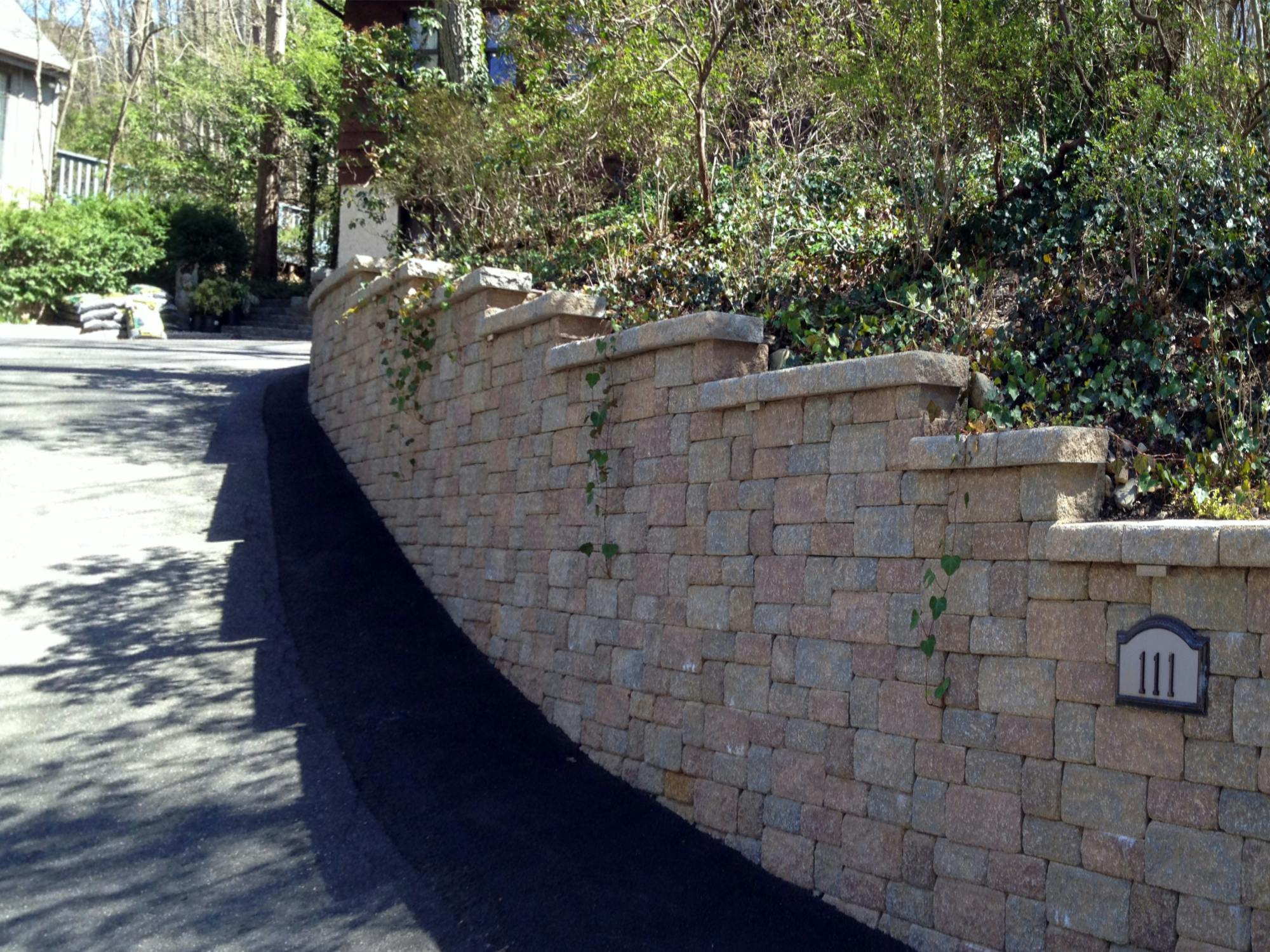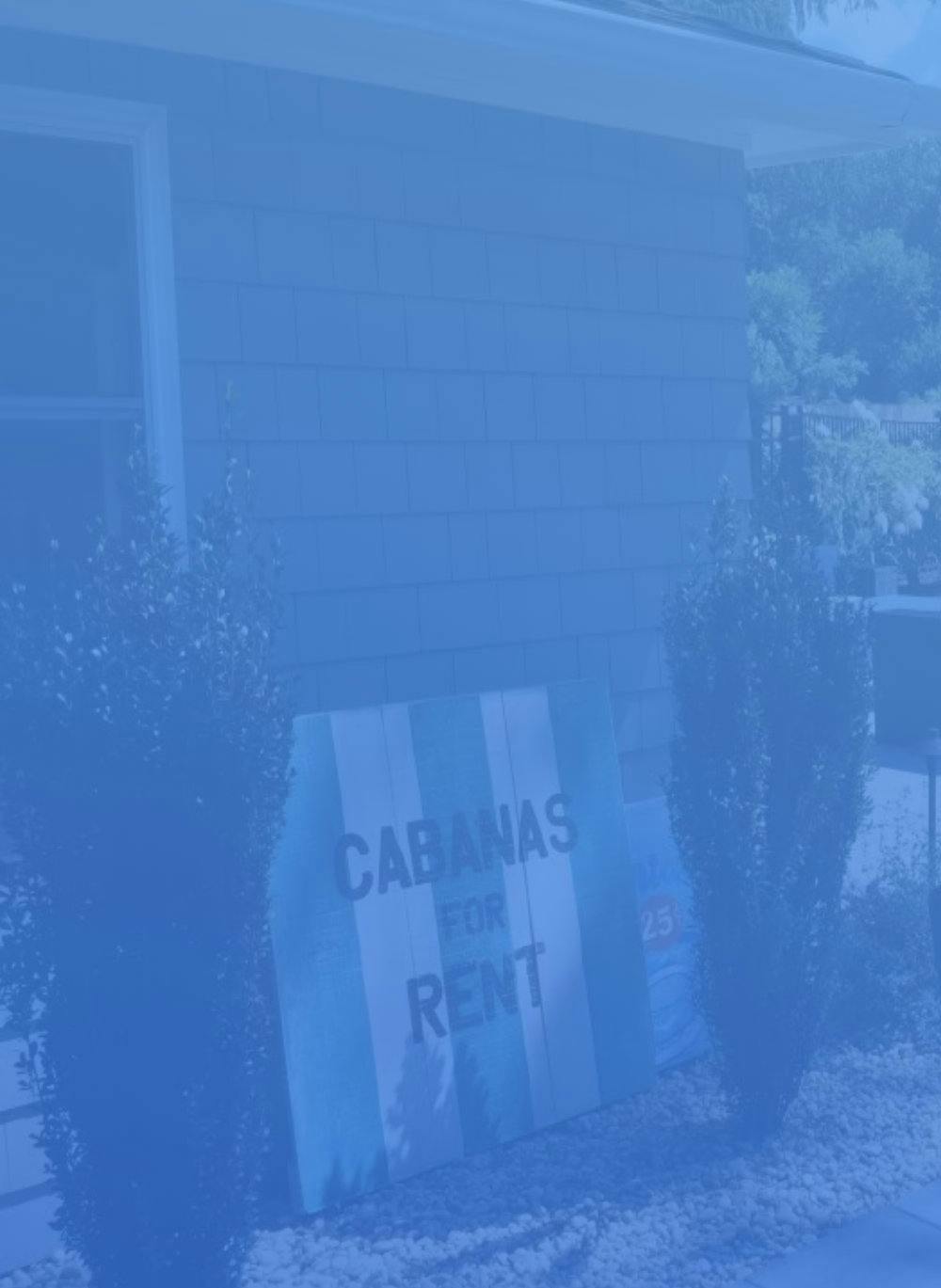
How to Choose the Right Retaining Wall for your Yard
Well-designed retaining walls at any height, properly drained and backfilled, will hold up against the freeze and thaw cycles
Retaining Walls are carefully engineered systems that restrain large amounts of soil that would otherwise slump and slide away from a foundation or damage the surrounding landscape. Retaining walls are a handsome addition to any yard while yielding many benefits. They make for additional seating, can create pathways, group plants and gardens, add depth and texture to completely change the shape and feel of an environment, even create outdoor “rooms.” Autumn Leaf designers can help you use retaining walls to create aesthetic themes and spaces.
How do you know what type of retaining wall is a fit for your yard? There are many types of retaining walls to choose from on the market, including interlocking concrete block, stone, brick, and mortar-less or dry-stacked field stone.
Interlocking Concrete Block (segmented retaining walls) - These interlocking-block systems are available from manufacturers such as Keystone, Versa-Lok, Techo-Bloc and others. Concrete Blocks are mortar-free and easy to assemble units that are small and modular. This allows walls to taper, turn, wrap, and curve along your landscape. Available in many textures, shapes, and colors, these engineered systems, which can be used for walls up to 20 feet high, rely on several techniques including:
- Keyed, battered design (block shapes key into one another and are stacked so they lean into the hillside)
- Backfill trap (block shapes allow backfill to be shoveled into the block webbing, trapping each block individually)
- Geo-grid webs (block maker supplies geo-grid woven-net tiebacks that attach to the block and are buried 5 feet in the hillside at specific heights)
- Stone, Brick, or Cinder Block - Natural stone walls are constructed from cut stone without the use of mortar or other adhesives to hold the wall in place. Instead, the wall is held together by friction and the weight of the stacked stones. Stone retaining walls give a beautiful rustic feel to any yard. Brick provides a more formal look. Cinder block is inexpensive and can be reinforced with steel and concrete. Stone-wall masonry is harder than it appears. Fitting the stone is exacting work and making mortar joints look natural requires experience. Also remember to follow all rules for landscape fabric, drainage, and backfill. A mortared wall needs a footing and a drainage system that will defeat frost heaving. A dry, non-mortared wall allows water to seep through, relieving pressure behind the wall naturally.
- Concrete - Concrete retaining walls are strong. A downfall to these retaining walls are that bare concrete isn't particularly attractive. It can be veneered with masonry, or special forms can be used that embed decorative designs in the finished wall. Walls over a few feet high should be formed and poured by a professional to achieve the most favorable results.
Each landscape site has different needs, different soils and slopes. We will help you choose the style that is right for you, then create the perfect retaining wall system for your dream garden. Building codes in most municipalities require that a qualified and licensed engineer design or approve retaining walls that are greater than four feet in height. Retaining walls are load-bearing structures, so check with your town or village to learn more about what the regulations in your area require.

Contact Information
Fill up the form and our Team will get back to you within 24 hours.
